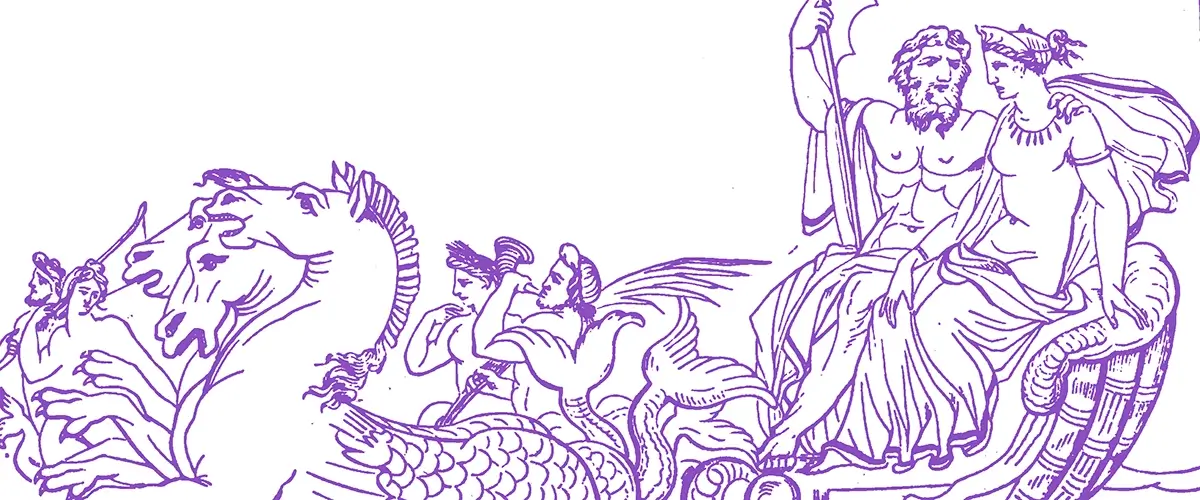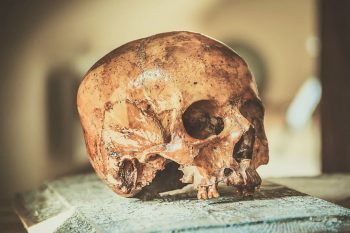Overview of Greek Mythology?
Greek Mythology refers to the collection of stories, legends, and myths that were created and passed down by the ancient Greeks. It encompasses a vast array of tales about gods, goddesses, heroes, monsters, and other supernatural beings, and provides insights into the beliefs, values, and customs of the ancient Greeks.
The ancient Greeks lived in what is now modern-day Greece, as well as in other regions of the Mediterranean, from around the 8th century BCE to the 6th century CE. During this time, they developed a rich and complex culture that encompassed art, philosophy, politics, and religion. Greek Mythology played a significant role in this culture, as it provided a way for the Greeks to understand and make sense of the world around them.
For the ancient Greeks, mythology was more than just a collection of stories – it was a fundamental part of their worldview. Myths provided explanations for natural phenomena, such as thunder and lightning, earthquakes, and the changing of the seasons. They also offered insights into human nature and the human condition, exploring concepts such as love, jealousy, honor, and courage. In addition, myths were used to reinforce social norms and values, as well as to justify the actions of the ruling class.
Myths were shared and retold through various forms of oral and written literature, including epic poetry, hymns, and drama. They were also depicted in art, architecture, and other forms of visual culture. The influence of Greek Mythology can be seen in many aspects of Western culture, from literature and art to science and philosophy.
Overall, Greek Mythology is significant not only as a fascinating collection of stories, but also as a window into the beliefs, values, and culture of an ancient civilisation that has had a profound impact on the development of Western civilisation.
The origins of Greek Mythology
The origin of Greek Mythology can be traced back to the ancient Near East, specifically to Mesopotamia and the ancient city of Babylon. These cultures had a rich tradition of storytelling and myth-making, and many of their myths and legends were later adopted and adapted by the ancient Greeks.
One of the most important figures in the development of Greek Mythology was Homer, the author of the epic poems the Iliad and the Odyssey. These works, which were composed in the 8th century BCE, introduced many of the key characters and themes of Greek Mythology, including the gods and goddesses, the Trojan War, and the hero’s journey.
Over time, Greek Mythology continued to evolve and develop, as new stories were added and old ones were modified or forgotten. The Greek city-states, which were independent and often in conflict with one another, each had their own local myths and traditions, which helped to further diversify and enrich the body of Greek Mythology.
One of the most important periods in the development of Greek Mythology was the Classical period, which began in the 5th century BCE. During this time, the great tragedians, such as Aeschylus, Sophocles, and Euripides, wrote plays that explored the themes and characters of Greek Mythology in great depth. These plays helped to popularise Greek Mythology and to shape the way that subsequent generations would view the myths.
In addition to the literary and dramatic traditions of Greek Mythology, there were also visual and material manifestations of the myths in art, architecture, and other forms of material culture. Greek temples, for example, were often decorated with friezes and sculptures depicting scenes from the myths, and pottery and other everyday objects also featured mythological themes.
Overall, the development of Greek Mythology was a complex and multifaceted process that was shaped by a variety of cultural and historical factors. From its origins in the ancient Near East to its full flowering in the Classical period and beyond, Greek Mythology remains a rich and fascinating subject that continues to captivate and inspire people today.
Important gods and goddesses of Greek Mythology
Greek Mythology is home to a vast pantheon of gods and goddesses, but here are some of the most important ones and their characteristics:
Zeus: King of the gods and ruler of the sky, thunder, and lightning. He is often depicted with a lightning bolt in his hand. Zeus was married to Hera, but he also had many affairs with other gods and mortals. He was known for his power, wisdom, and cunning.
Hera: Queen of the gods and goddess of marriage and childbirth. She was married to Zeus and was known for her jealousy and vengefulness, particularly towards Zeus’s lovers and their children. Hera was often depicted wearing a crown and holding a sceptre.
Poseidon: God of the sea, earthquakes, and horses. He was often depicted holding a trident, and was known for his tempestuous temper and his ability to cause and control earthquakes and storms.
Demeter: Goddess of agriculture and fertility. She was often depicted holding a sheaf of wheat or a cornucopia, and was revered by farmers and peasants as the bringer of the harvest.
Athena: Goddess of wisdom, strategy, and warfare. She was born fully grown and armored from the head of her father Zeus, and was often depicted wearing a helmet and carrying a spear and shield. She was known for her strategic thinking and her ability to outwit her opponents.
Apollo: God of music, poetry, prophecy, and medicine. He was often depicted with a lyre or a bow and arrow, and was revered as a patron of the arts and healing.
Artemis: Goddess of the hunt, wilderness, and childbirth. She was often depicted carrying a bow and arrow and wearing a short tunic, and was known for her independence and fierce protectiveness of her virginity.
Ares: God of war and violence. He was often depicted wearing armor and carrying a spear or sword, and was known for his aggressive and violent tendencies.
Aphrodite: Goddess of love, beauty, and sexuality. She was often depicted with a girdle that made her irresistible to men, and was known for her seductive power and ability to create romantic relationships.
Hermes: God of commerce, travelers, and thieves. He was often depicted wearing a winged helmet and sandals, and was known for his speed and cunning. He was also the messenger of the gods and the conductor of the dead.
These are just some of the major gods and goddesses of Greek Mythology, and there are many others as well. Each deity had their own unique roles and characteristics, as well as complex relationships with other gods and mortals.
Famous heroes and monsters of Greek Mythology
The heroes and monsters mentioned below, along with the ones mentioned earlier, are a testament to the rich and varied mythology of ancient Greece. They continue to inspire and fascinate people today, and they represent the human desire to understand the world around us, to face our fears and challenges, and to strive for greatness in everything we do.
Perseus
A hero who is famous for slaying the Gorgon Medusa, a monster with snakes for hair who could turn people to stone with her gaze. Perseus used a reflective shield to avoid looking directly at Medusa, and then used a sword to decapitate her. He also saved the princess Andromeda from a sea monster and became king of Mycenae. Perseus is an archetype of the Greek hero, with his cunning and bravery in the face of danger.
Theseus
A hero who was famous for slaying the Minotaur, a monstrous creature with the head of a bull and the body of a man who lived in a labyrinth on the island of Crete. Theseus was able to navigate the labyrinth and defeat the Minotaur with the help of a ball of string given to him by the princess Ariadne. Theseus also founded Athens and was a symbol of the city’s power and cultural achievements.
Jason
A hero who is famous for leading the Argonauts, a band of heroes who sailed to the edge of the world to retrieve the Golden Fleece, a magical object that could heal any wound. Jason completed a series of tasks and faced many dangers, including the bronze giant Talos and the dragon guarding the fleece. Jason’s story represents the quest for knowledge and power, and the risks and rewards that come with it.
The Sphinx
A monster with the head of a woman, the body of a lion, and the wings of a bird. The Sphinx would ask travelers a riddle, and if they couldn’t answer it, she would devour them. Oedipus, the hero of the play by the same name, was able to solve the riddle and defeat the Sphinx, thereby freeing the city of Thebes from her reign of terror. The Sphinx represents the power of knowledge and the consequences of failing to understand it.
The Cyclops
A race of one-eyed giants who were the children of the god Poseidon. The most famous of the Cyclops was Polyphemus, who captured the hero Odysseus and his men and ate some of them before Odysseus was able to blind him and escape. The Cyclops represent the primal and destructive forces of nature, as well as the danger and unpredictability of the unknown.

